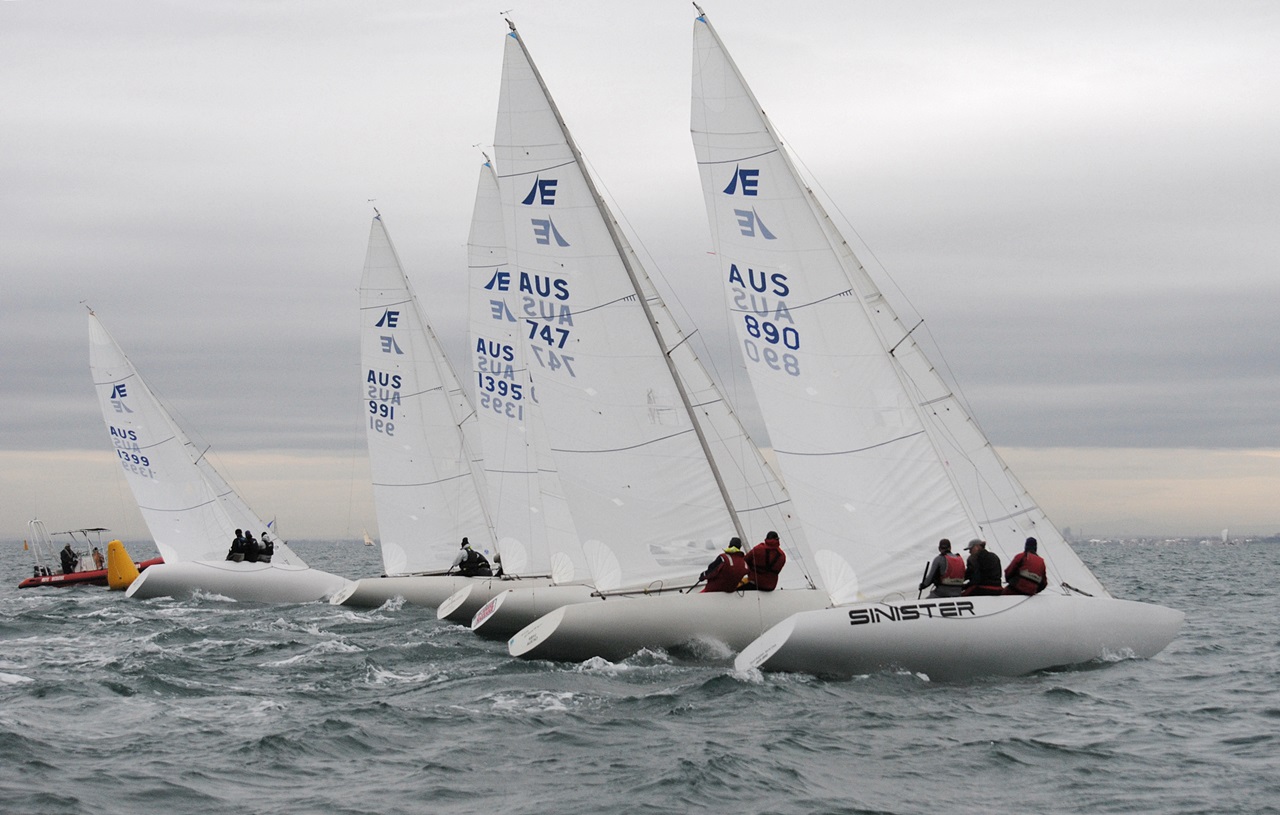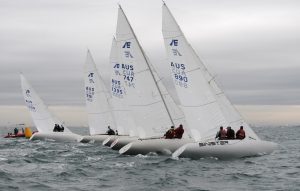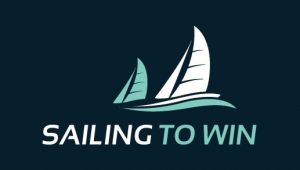

Find The Favoured End Without Instruments. Getting a great start in clear air can be the most important part of your race. Knowing the favoured end and determining how much it is favoured will help with your starting strategy.
There are many considerations to ensure a great start. Consider current, where other boats are, the size of the fleet, wind speed and anticipated shifts.
There are many other factors to take into account. A lot of thought and preparation needs to be given in the lead-up to the gun going off.
Instruments to ping the line (if legal in your class) can be of enormous benefit. I believe that you should also be able to use your compass only to work out the line. A couple of other methods are set out below.
Going Head to Wind on the Middle of the Line:
To carry this out, sail down the line from the boat end about a couple of boat lengths to leeward, when you get to the middle of the line, ease the sails and point directly into the wind. Once you are on the line and at right angles to it, see which end the bow is pointing to, that will be the favoured end.
A variation of this is to carry out the same procedure but a number of lengths below the line. Doing this will make it easier to determine which end the bow is pointing to. It will also keep you clear of heavy traffic on the line in large fleets. A disadvantage here is that there may be boats above you feeding back bad air. This makes it harder to get an accurate reading.
Going Head To Wind On the Line But at an End:
The leeward end is probably the easiest end to carry out this check as generally there is less traffic there. Go head to wind beside the pin. Use the angle of your transom to the line to determine the favoured end.
If the imaginary line at right angles to your heading is above the start boat the pin is favoured. Vice versa if the line is behind the start boat.
This will also give you an idea about how favoured one end is from the other and if the bias is not that great you may decide to start a little away from the favoured end where the chances of a clear air start are greater.
Using Your Compass:
Sail accurately the line from the boat end noting the compass heading, then add 90 degrees to that.
The angle of the line must be compared with your measured True Wind Direction which you got from a head-to-wind reading.
One clear way of demonstrating this is if you have a shifty wind, with the line laid to be approximately on the average wind direction.
Say that the wind is periodically shifting ca. 10 degrees on either side of this mean direction.
When the wind is on its maximum left shift of 10 degrees, clearly the port end of the line is now favoured. Conversely, when the wind is on its maximum right shift of 10 degrees, the starboard end of the line is now favoured by that 10 degrees.
Obviously, in a shifty wind, the wind direction measurement must be repeated at intervals. Changes in the line bias can be monitored. Then a good attempt can be made to evaluate the best starting approach.
A Method to Use if You Don’t Have a Compass:
Often referred to as the Sheet and Cleat method. Once again, sail down the line from the start boat end and set your sails until they just start to luff. Either cleat them or take a note of exactly where the sheet is through the turning block.
When you reach the other end of the line, tack or Gybe and head up the line in the opposite direction without adjusting the sheets.
If the sails are luffing, the start boat end is favoured and if you need to let the sails out to get the telltales flying, the pin is favoured.
#sailingtowin #sailing #sail #yachtrace #sailcoach #sailtowin

